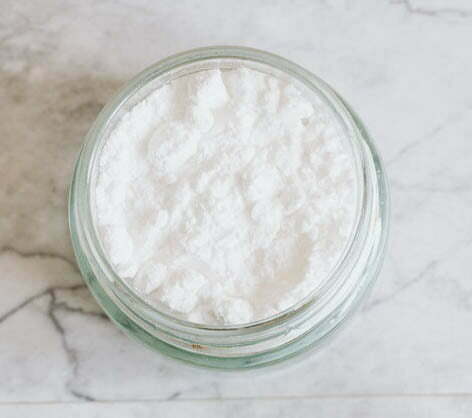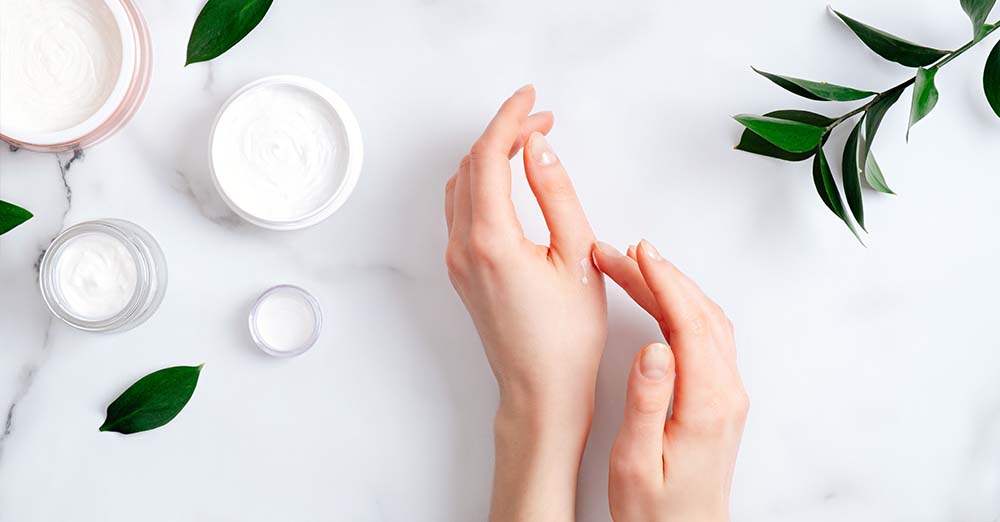Recently updated on: December 14th, 2022
Alpha arbutin (α-glycosylated hydroquinone) is a synthetic compound derived from hydroquinone or from the substance beta arbutin available in plants. Just as hydroquinone, recalled from the market in 2001 due to its cancerogenic risks, alpha arbutin is very effective in removing skin discolorations. Therefore it is used in cosmetic products as a safer substitute.
What is the source of skin discolorations?
Skin coloration disorders, such as dark spots (hyperpigmentation) and skin decoloration (hypopigmentation), are linked primarily to melanogenesis, i.e. production of melanin – the skin’s natural pigment. There are many factors which influence the course of melanin synthesis, from genetic and epigenetic, through hormonal, diet-related, to environmental, primarily exposure to UV radiation.
Tyrosine, an endogenic amino acid, plays a key role in its production. It is converted by tyrosinase into L-DOPA (L-3,4-dihydroxyphenylalanine), and then oxidized to dopaquinone, from which melanin is produced. Any disturbance in this synthesis path causes melanin production irregularities, which may take the form of over-pigmentation, as well as melanin deficiency, such as skin decolorations, leukoderma, or albinism.
Properties of alpha arbutin
The action mechanism of alpha arbutin is closely linked to the aforementioned melanogenesis. XIt inhibits tyrosinase, which is the primary enzyme responsible for melanin synthesis, and – as a result – limits the production of the pigment that can cause discolorations. At the same time, and in contrast to its precursor – hydroquinone, it does not influence the expression and synthesis of mRNA, in other words does not cause cytotoxicity of melanocytes.

Alpha Arbutin
Natural Poland is a wholesale distributor of high-quality 100% alpha arbutin. This ingredient is used in modern cosmetic products. It has skin-lightening properties.
(α-Arbutin)
Alpha arbutin’s anti-discoloration properties are not only linked to its tyrosinase-inhibiting effect, but also to its antioxidant function. The compound is a strong antioxidant, which captures free radicals and reduces their production, thus protecting cells (including fibroblasts of the skin) against oxidative stress. This property may be an additional beneficial factor for skin color, as free radicals also play a role in melanin production – they are a byproduct of L-DOPA to dopaquinone oxidation.
Is alpha arbutin safe?
Given its close affinity to hydroquinone, the safety of alpha arbutin is a source of controversy, not only in the context of the structural similarity, but also studies indicating that, to a limited extent, it may be metabolized to the toxic hydroquinone. The process takes place both in the liver (especially after oral administration), as well as through interaction with the skin’s microbiome or as a result of exposure to UV radiation.
However, research results show that alpha arbutin is a much safer compound than hydroquinone, and its application, even in higher concentrations, does not lead to frequent adverse effects, such as allergic reactions or skin irritation. No carcinogenic properties of alpha arbutin have been proven, either.
Noteworthy, however, its decomposition caused by UV radiation may take place not only after application on the skin, but also due to storage and manufacturing conditions of cosmetic products – it may impact not only the compound’s safety, but its effectiveness as well.
Bibliography:
1. Boo YC. (2021). Arbutin as a Skin Depigmenting Agent with Antimelanogenic and Antioxidant Properties. Antioxidants, 10(7): 1129. https://doi.org/10.3390/antiox10071129
2. Migas P, Krauze-Baranowska M. (2015). The significance of arbutin and its derivatives in therapy and cosmetics. Phytochemistry Letters, 13: 35-40. https://doi.org/10.1016/j.phytol.2015.05.015
3. Saeedi M, Khezri, K, Seyed Zakaryaei A, Mohammadamini H. (2021). A comprehensive review of the therapeutic potential of α-arbutin. Phytotherapy Research, 35(8): 4136-4154. https://doi.org/10.1002/ptr.7076


